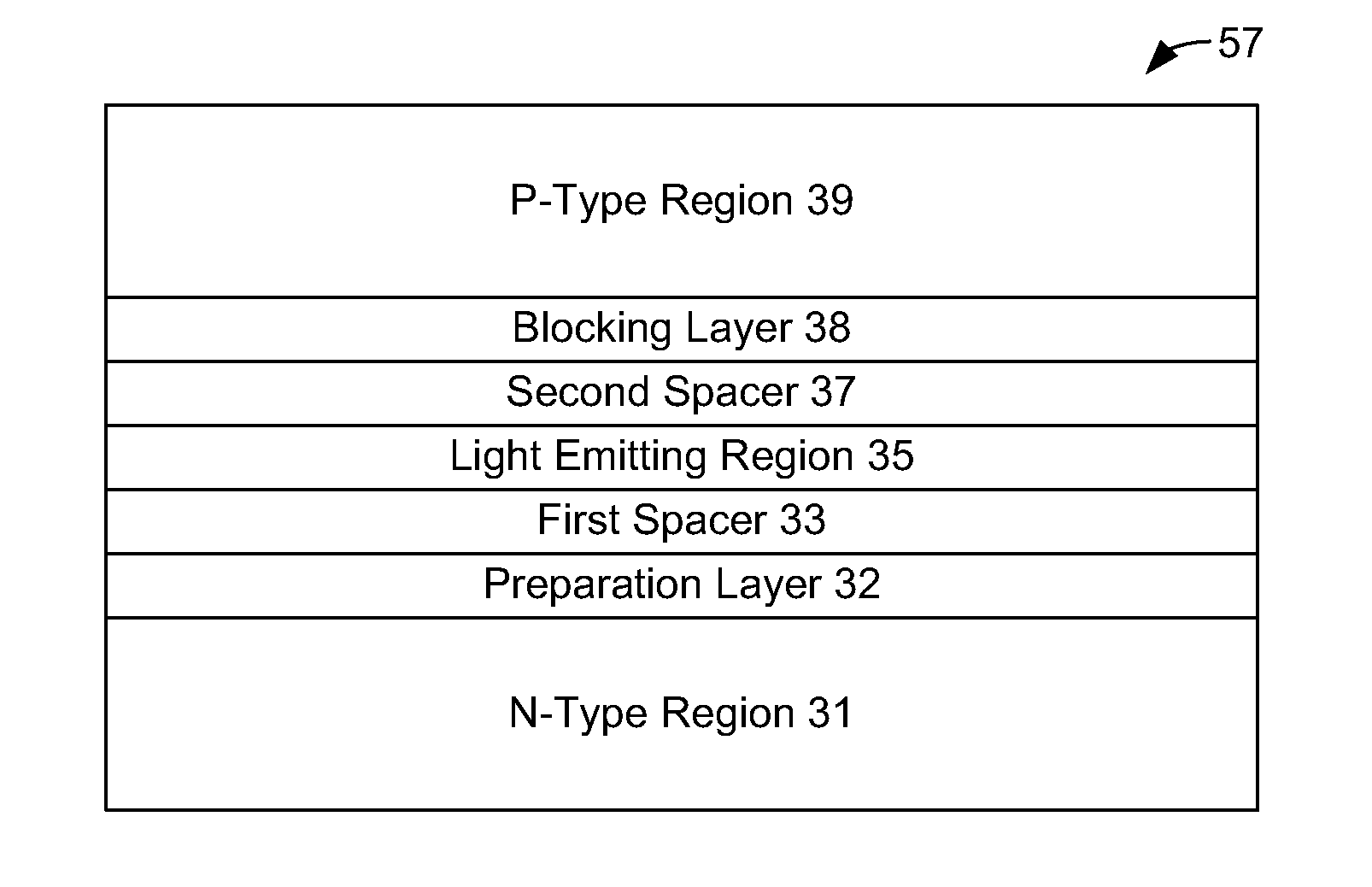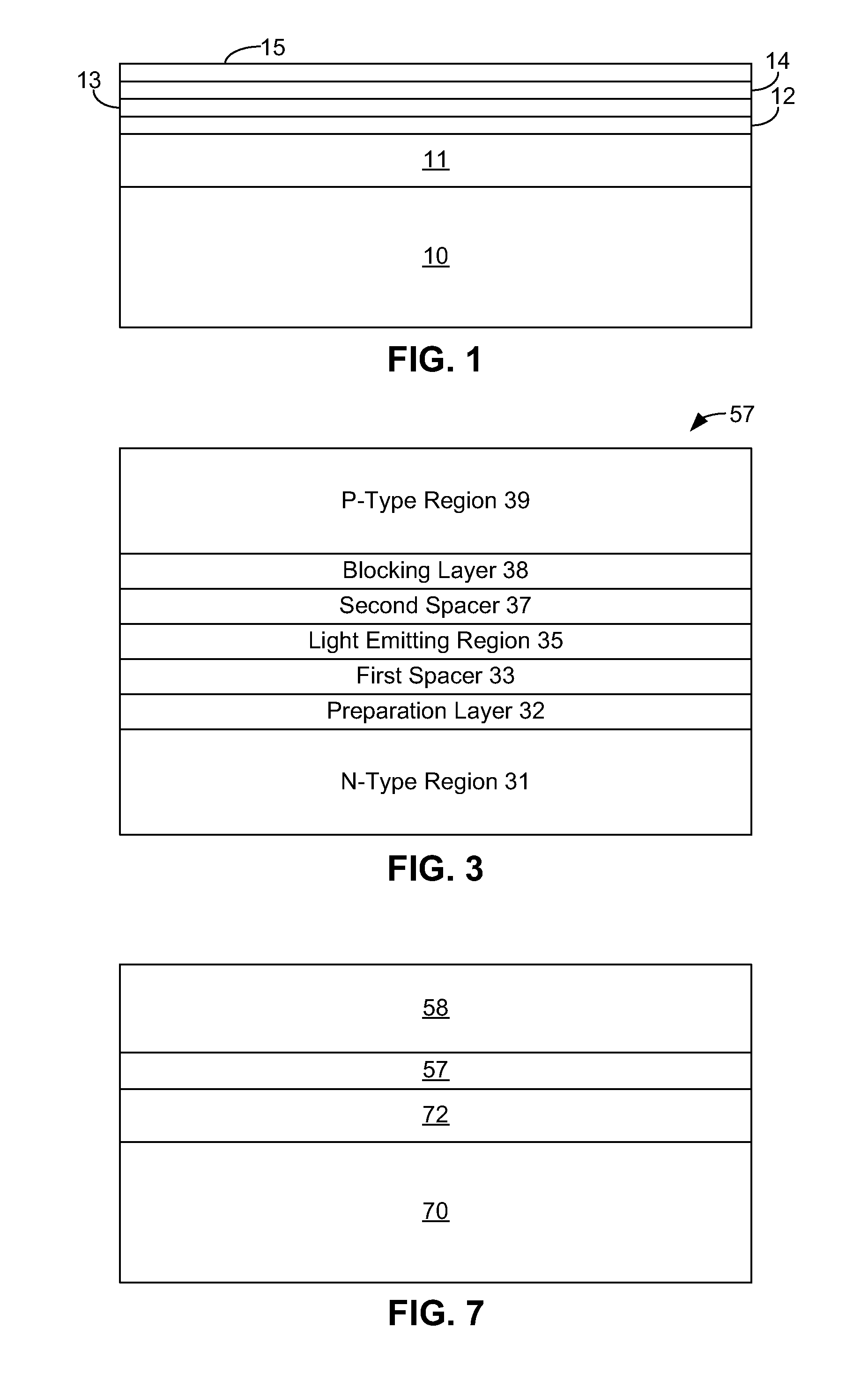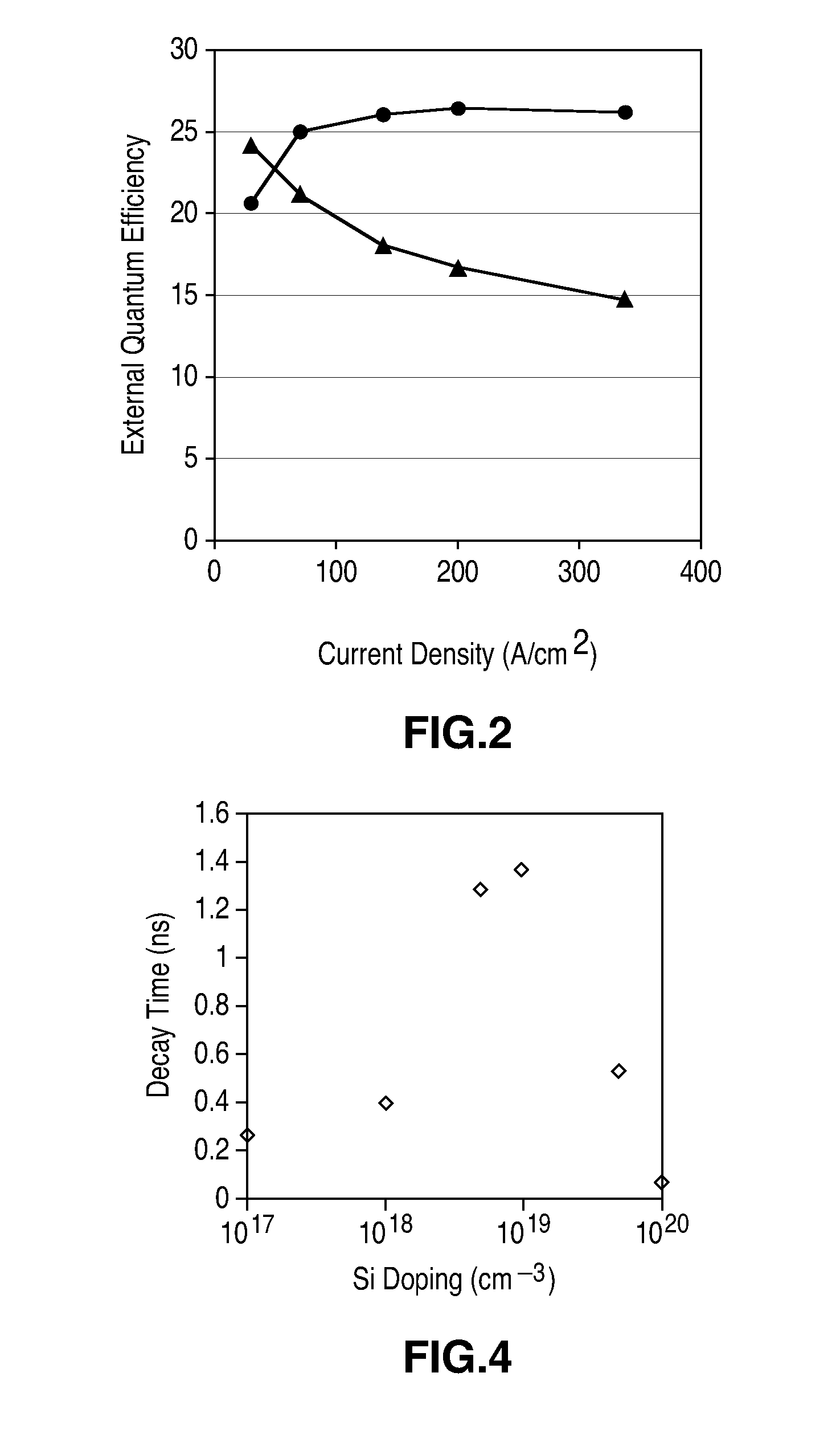III-Nitride Light Emitting Device with Double Heterostructure Light Emitting Region
a light emitting device and heterostructure technology, applied in the direction of semiconductor devices, basic electric elements, electrical appliances, etc., can solve the problem of devices suffering from decreasing efficiency
- Summary
- Abstract
- Description
- Claims
- Application Information
AI Technical Summary
Benefits of technology
Problems solved by technology
Method used
Image
Examples
Embodiment Construction
[0021]FIG. 1 illustrates a common III-nitride light emitting device. An n-type region 11 is grown over a sapphire substrate 10. An active region 12, including multiple thin quantum well layers separated by barrier layers, is grown over n-type region 11, followed by a GaN spacer layer 13, a p-type AlGaN layer 14, and a p-type contact layer 15.
[0022]FIG. 2 illustrates the external quantum efficiency of a device such as the device of FIG. 1 (triangles on FIG. 2) and a device according to an embodiment of the present invention (circles on FIG. 2). The external quantum efficiency is the internal quantum efficiency, defined as the flux of photons produced divided by the flux of carriers supplied, multiplied by the extraction efficiency. For a given lamp design, the extraction efficiency is constant, thus the extraction efficiency is the same for both devices shown in FIG. 2. As the current density applied to the device of FIG. 1 increases, the external quantum efficiency of the device in...
PUM
 Login to View More
Login to View More Abstract
Description
Claims
Application Information
 Login to View More
Login to View More - R&D
- Intellectual Property
- Life Sciences
- Materials
- Tech Scout
- Unparalleled Data Quality
- Higher Quality Content
- 60% Fewer Hallucinations
Browse by: Latest US Patents, China's latest patents, Technical Efficacy Thesaurus, Application Domain, Technology Topic, Popular Technical Reports.
© 2025 PatSnap. All rights reserved.Legal|Privacy policy|Modern Slavery Act Transparency Statement|Sitemap|About US| Contact US: help@patsnap.com



